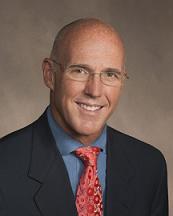 Scott Spann, MD, board-certified orthopedic spine surgeon, is the founder of Pantheon Spinal, a device company based in Austin, Texas. Dr. Spann explains how he first started Pantheon Spinal, the difficulties along the way, the devices in the company's portfolio and the benefits of building a company from his own ideas.
Scott Spann, MD, board-certified orthopedic spine surgeon, is the founder of Pantheon Spinal, a device company based in Austin, Texas. Dr. Spann explains how he first started Pantheon Spinal, the difficulties along the way, the devices in the company's portfolio and the benefits of building a company from his own ideas.
1. Begin with an original idea. Spine surgeons perform procedures on a regular basis and interact with a number of different devices. It is no stretch of the imagination to say spine surgeons often have ideas that could address an aspect of spine surgery in a different way. Dr. Spann has been working on building Pantheon Spinal for eight years, but he began with one original idea.
"L5 S1 is the holy grail of lateral access, but many systems didn't have any consistent way of getting there," says Dr. Spann. He decided to create a consistent way. He worked with a number of different techniques and methods until he had created a device that could be used in a repeatable, consistent way and exceeded reward over risk.
2. Use the autonomy you have to build on the idea. As the process matured in his mind, Dr. Spann began to move forward. The first device he created is the aptly named Epiphany. He met with major players within the device field to see if he could garner interest in the device. He was politely, if distantly, received. "The device was not having the level of receptivity I thought it deserved. I decided to form my own company," says Dr. Spann.
Pantheon Spinal is named for the domed building in Rome. "A significant part of my approach is visualization all the way down to L5 S1. The entrance of light into the Pantheon gave me an idea," says Dr. Spann.
Three years after his initial meeting with a large device company, he received an offer for the device that would include standard royalties, if he were to abandon the formation of Pantheon Spinal. "Part of the impetus of starting a company is the motivation of doing things your way," says Dr. Spann. He declined and moved forward alone.
Dr. Spann was wading through the waters of business alone and he had the ability to control how and when his idea grew. "I decided to build an implant for the proximal levels, L4 and up, as well," says Dr. Spann. Pantheon Spinal's portfolio grew with the addition of the Pontus, a secondary implant which is designed to bridge the remaining portion of the lumbar spine.
3. Understand the complexity of moving forward. Device companies have the advantages of millions of dollars and hundreds of employees. Spine surgeons still run a practice while trying to introduce and move forward with ideas on their own. One of the most important issues of beginning a device company is to put measures in place that ensure your ideas remain yours. Spine surgeons will need to speak with attorneys. Experts are required at every step in the process. "As idea generators, most of us do not know the nuances that are involved," says Dr. Spann.
Throughout the history of spine surgery, each time a new technique is introduced and embraced spine surgeons have had to add a new skill set. They have to step outside of their comfort zone to adopt a new surgical procedure or device. "Older surgeons will never be the early adopters. Younger surgeons don't have enough experience or the comfort level. Very often, it is the surgeons who are just hitting their stride that become the first to adopt new techniques," says Dr. Spann. It will take time for a device to gain traction and wide-spread use.
In order to propel a device company forward towards success, surgeons will need to secure manufacturers and suppliers. They will need to navigate through the FDA approval process and initiate studies examining the safety and efficacy of the products. "If I had known all of these things, I may never have carried this through to the end. It is a daunting task. On the flipside, I have actually carried this through from inception through FDA approvals to fruition," says Dr. Spann.
More Articles on Spine:
3 Predictions for the Future of Minimally Invasive Spine Surgery
5 Ways Spine Cases Can Improve Profitability in Poorly Performing Surgery Centers
Dr. Richard Kube: 4 Points on Sacroiliac Joint Problems


